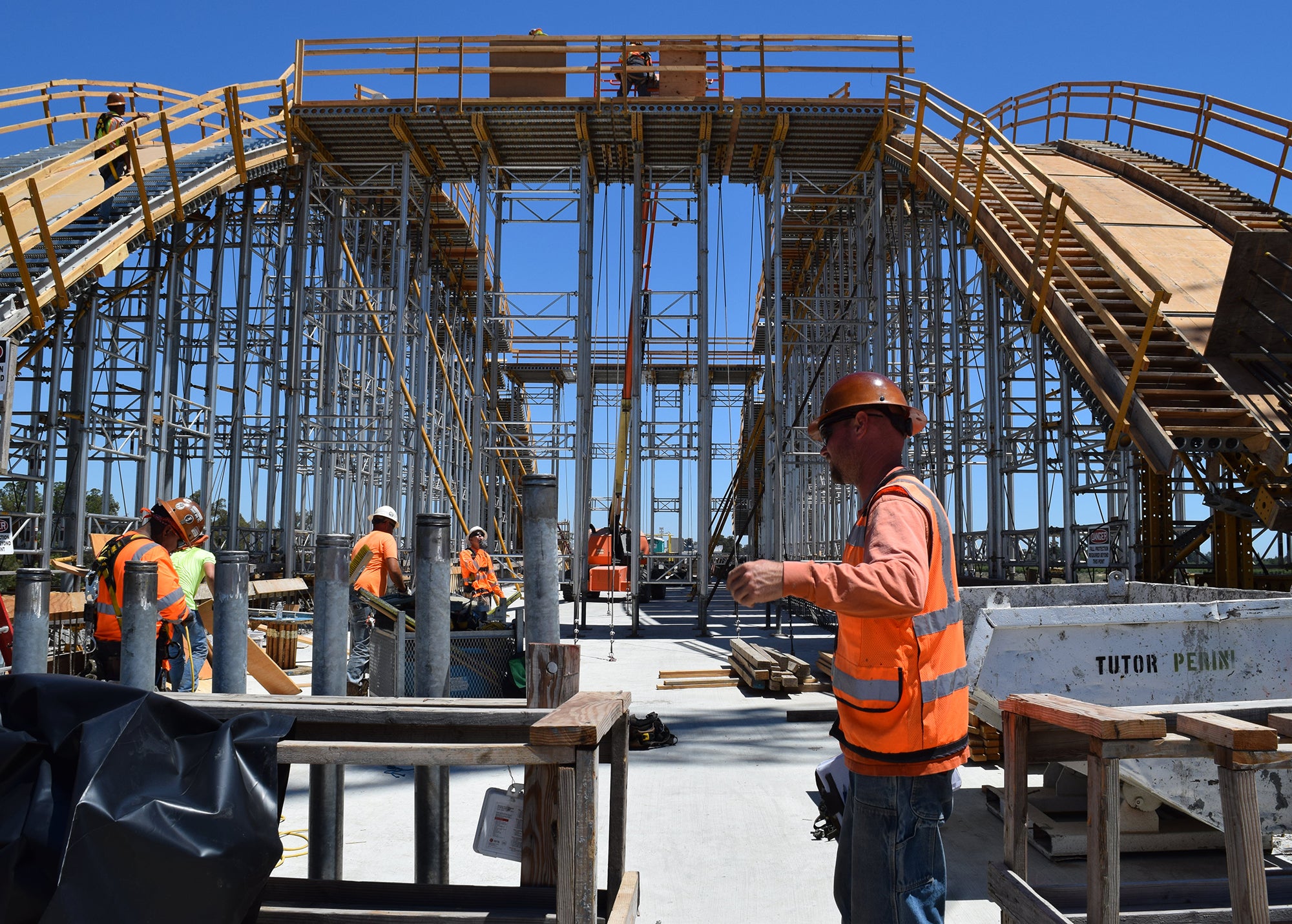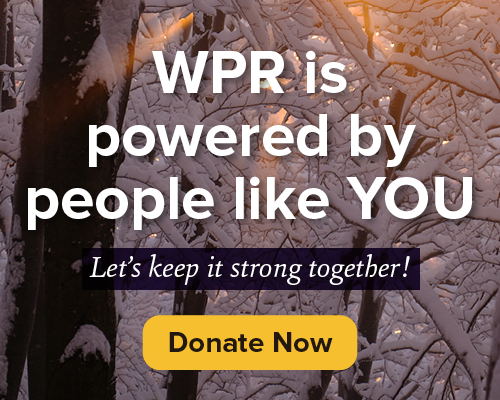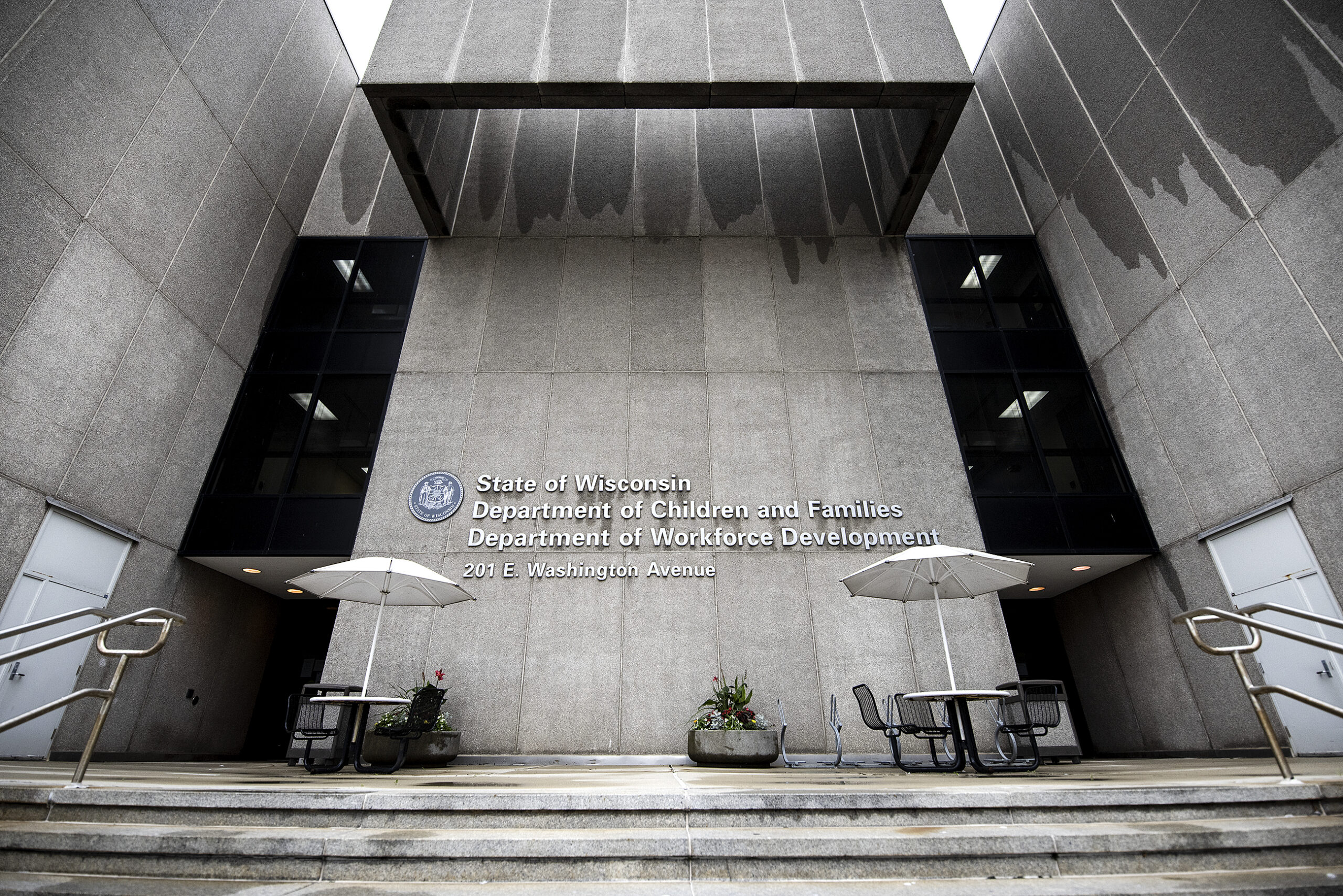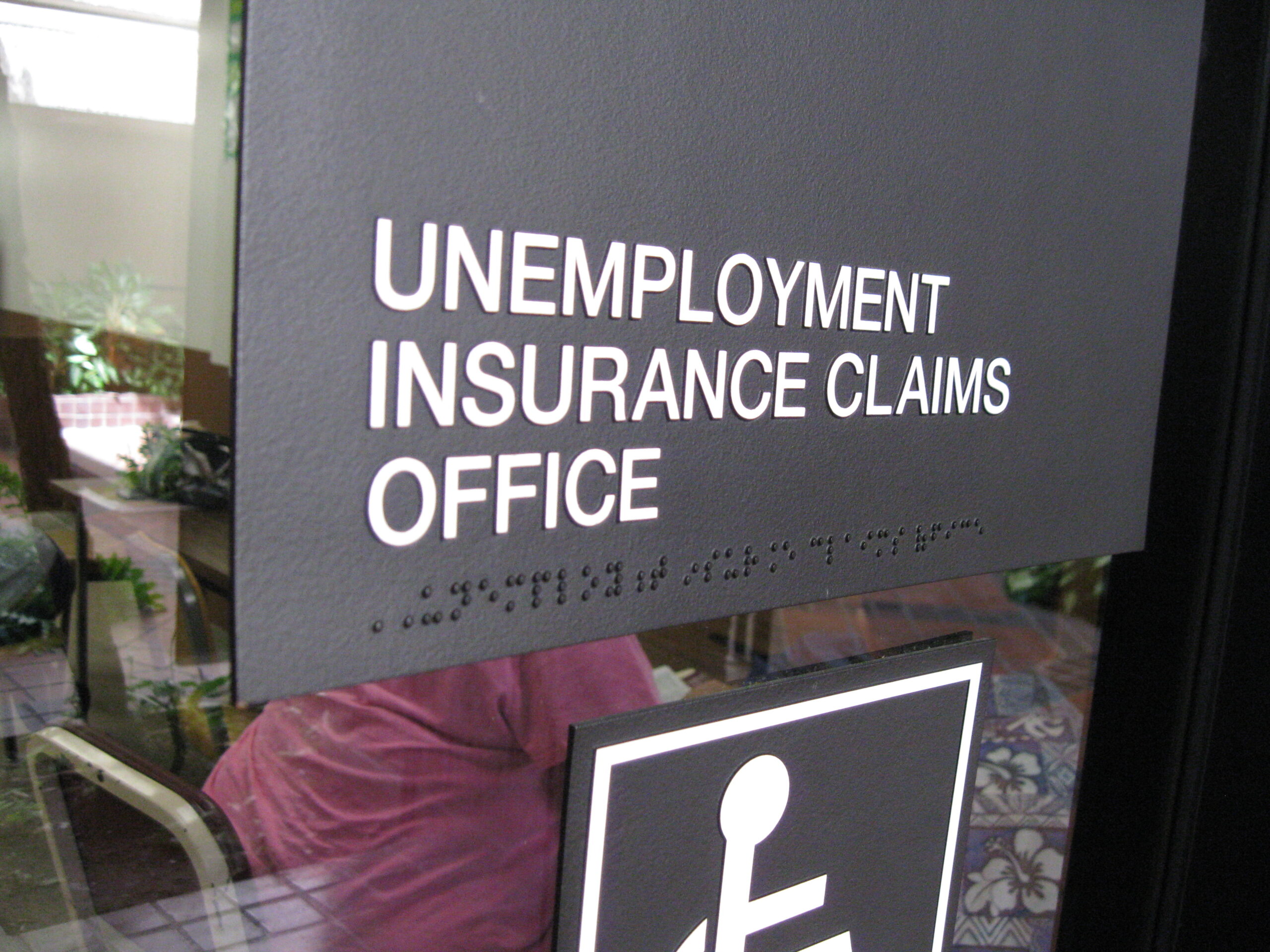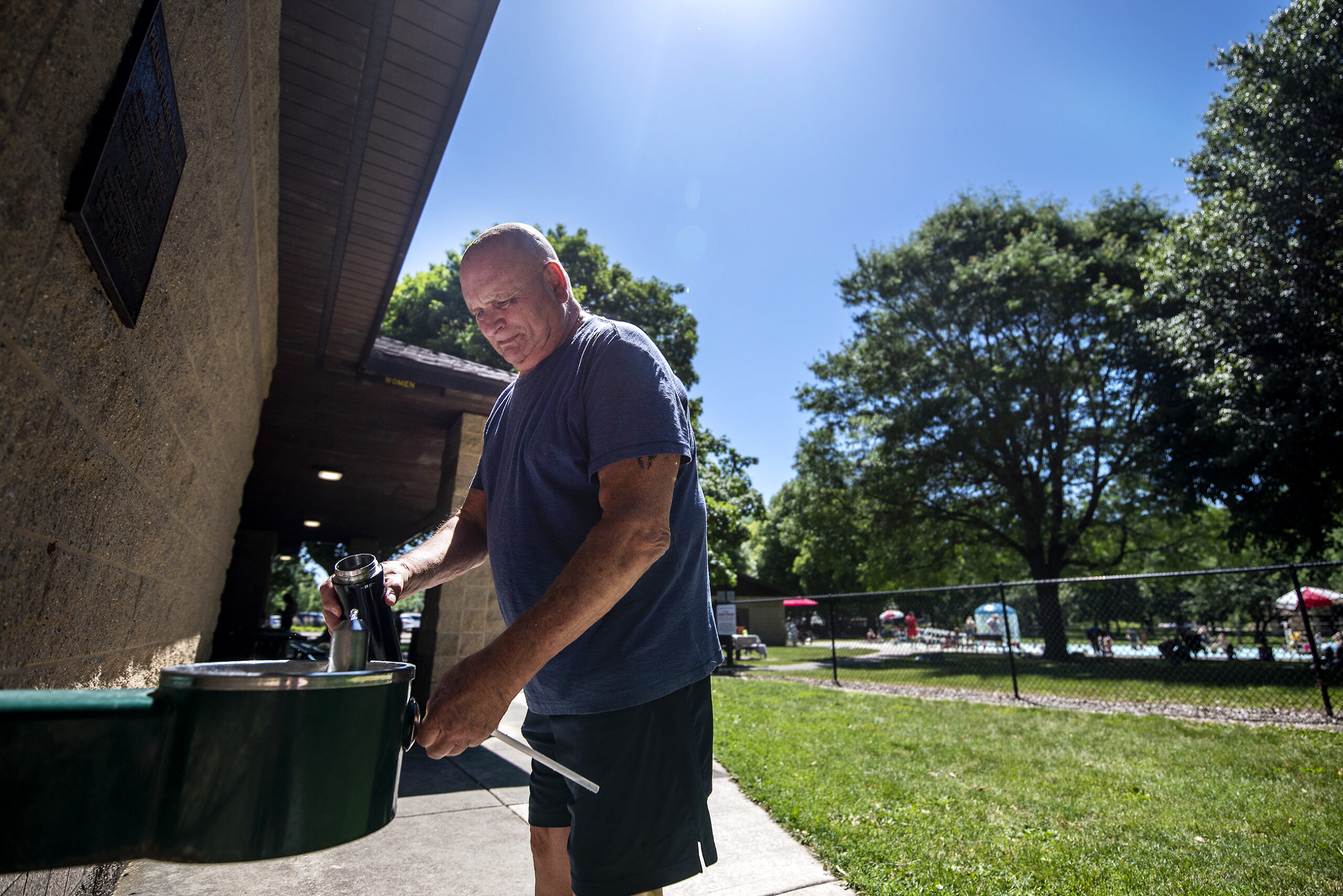As Wisconsin begins the summer months with a blistering heat wave, the head of a workplace safety program is reminding employers to watch out for signs of heat stress among employees.
Over the summer solstice weekend, most of Wisconsin and the country fell under a dayslong heatwave that blanketed residents in 90-plus degree heat.
Kate McCoy directs the Department of Health Service’s Occupational Health and Safety Surveillance Program. She told WPR’s “Wisconsin Today” that hot days can create severe health risks for workers if employers aren’t sufficiently providing water, rest and shade.
News with a little more humanity
WPR’s “Wisconsin Today” newsletter keeps you connected to the state you love without feeling overwhelmed. No paywall. No agenda. No corporate filter.
“Hotter temperatures are a severe and persistent health risk for anybody, but especially for people who have to work in that kind of heat stress,” she said. “What we worry about under those conditions are both the risks that workers face — frankly, of death on the job in the worst circumstances, or also of being sickened to the point where they have to walk off the job and the cumulative effects that heat can have on the body if people are exposed day after day.”
McCoy co-wrote a 2024 report reviewing heat-related illnesses on the job. The report notes Wisconsin is likely to face more high-heat days because of climate change. This makes it all the more imperative for employers to provide heat protection, she said.
On “Wisconsin Today,” McCoy spoke about the dangers of high heat in the workplace, signs of heat stress and heat regulation for employers.
The following was edited for brevity and clarity.
Rob Ferrett: You looked at what kinds of occupations were reporting problems with heat and filing disability claims. What are some of the industries you have your eye on?
Kate McCoy: It’s a lot of the kinds of jobs and industries that you would expect to see. It’s a lot of folks who spend all or part of their day working outside, whether that’s construction, landscaping, folks who are doing delivery, truck drivers coming in and out of their vehicle, trash collection, utility workers — lots and lots of people who are engaged in outdoor work.
But then there are also some indoor workers who are in poorly ventilated and poorly cooled environments, or environments where there’s heat being generated inside. So, folks who are working in kitchens, in some manufacturing and production facilities, in some warehouses. And those are really the types of jobs that we see as most at risk.
Not covered in our report but also very much at risk are agricultural workers. They didn’t rise to the top in our report because we’re looking at workers’ compensation claims, and a lot of them aren’t going to be reflected in that. But farm workers are also a group that’s at a very high risk, as well as law enforcement and firefighters.

RF: What is your message to employers on how to create a safe workspace when it’s hot?
KM: First of all, awareness. Make sure that you’re aware that heat is a serious risk for your workers. And it doesn’t have to be an extreme heat wave for people to be severely affected, especially if people are working long hours in the heat, if they are doing a lot of physical exertion, if they have any underlying health conditions, or are pregnant or are taking medications that dehydrate them. Employers should be aware and get themselves trained, get their workers trained on what to do, how to recognize the signs and symptoms of heat exhaustion and heat stroke, and to know what to do in those cases. To know first aid, to know when to call and to have a plan for for how to address those situations and how to prevent them.
The other thing that employers can do is think about cooling their environment as much as possible. If you’re talking about an indoor environment, make sure you have good ventilation, good AC. We really need workers to have access to water, rest and shade. If those things aren’t readily available and workers don’t know that they can take advantage of them, make sure that you implement those on your work site.
You might need to modify your schedules to make sure that people aren’t working during the hottest time of the day. You might need to slow down some of the work in order to make sure that people are staying safe and healthy and that they are actually able to be more productive, because all of us get less productive as the temperature goes up. So those frequent breaks are helpful, not just for health and safety, but also for productivity.
RF: What are the common early signs of trouble that employers and coworkers should watch out for?
KM: Anything where they’re starting to feel unwell at work, pay attention to it in the heat. In particular, pay attention to things like dizziness, nausea, vomiting. If somebody starts to lose consciousness or is in an altered state and all of a sudden they’re not making sense — maybe it seems like they’re drunk, something like that — that’s a very serious warning sign. If people start seizing, that’s a very serious warning sign. Those are signs of potential heat stroke and that’s an immediate 911 call.
RF: I remember when I was younger at a job and we were all young, dumb, tough guys who weren’t going to worry about heat bothering us. Send the message to people that, yes, heat is a serious potential health concern.
KM: There are cases in the U.S. of young, healthy people dying on the job due to heat. One of the most important things to know is that those early days on a job when your body is not acclimated to heat are the most dangerous. Up to 70 percent of heat-related deaths on the job occur in the first week on the job.
My mind goes to seasonal employees, to teen workers who are doing a summer job. Maybe they’re a student athlete, but they aren’t used to working outside eight to 10 hours a day, unprotected, with that kind of sustained physical exertion on their body, even if they’re physically fit.
Wisconsin Public Radio, © Copyright 2025, Board of Regents of the University of Wisconsin System and Wisconsin Educational Communications Board.

